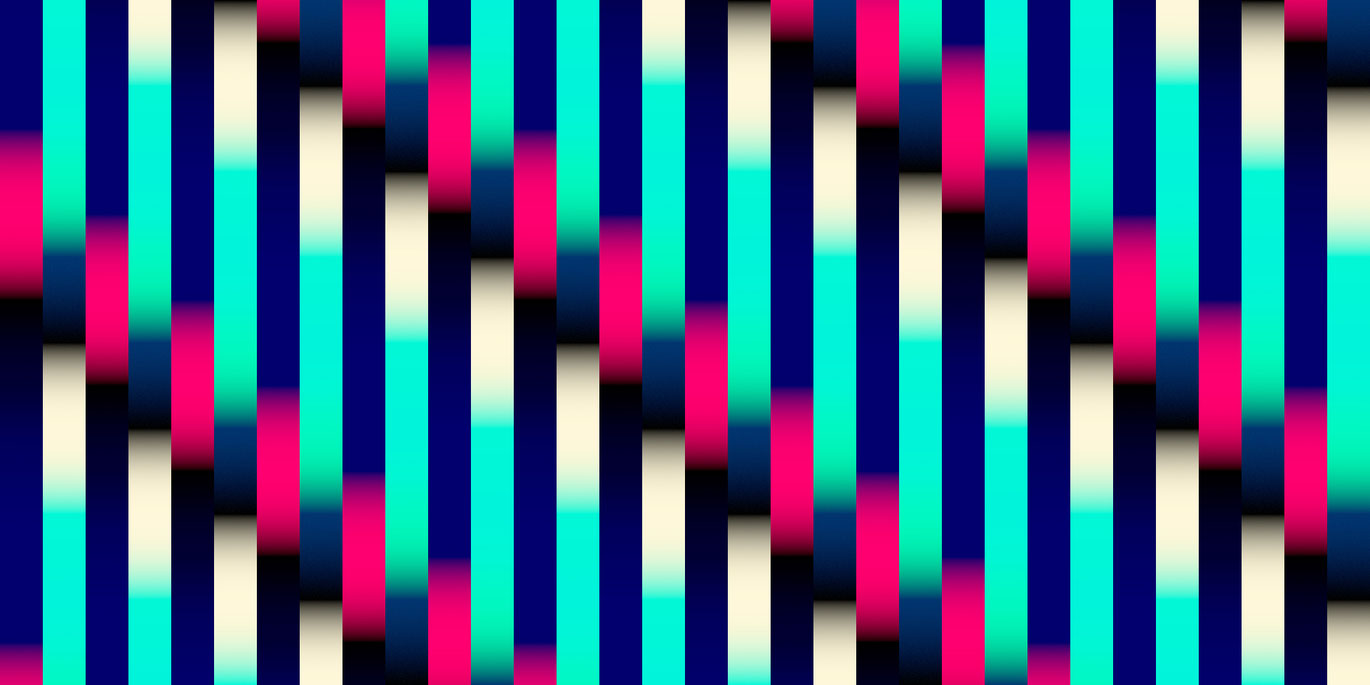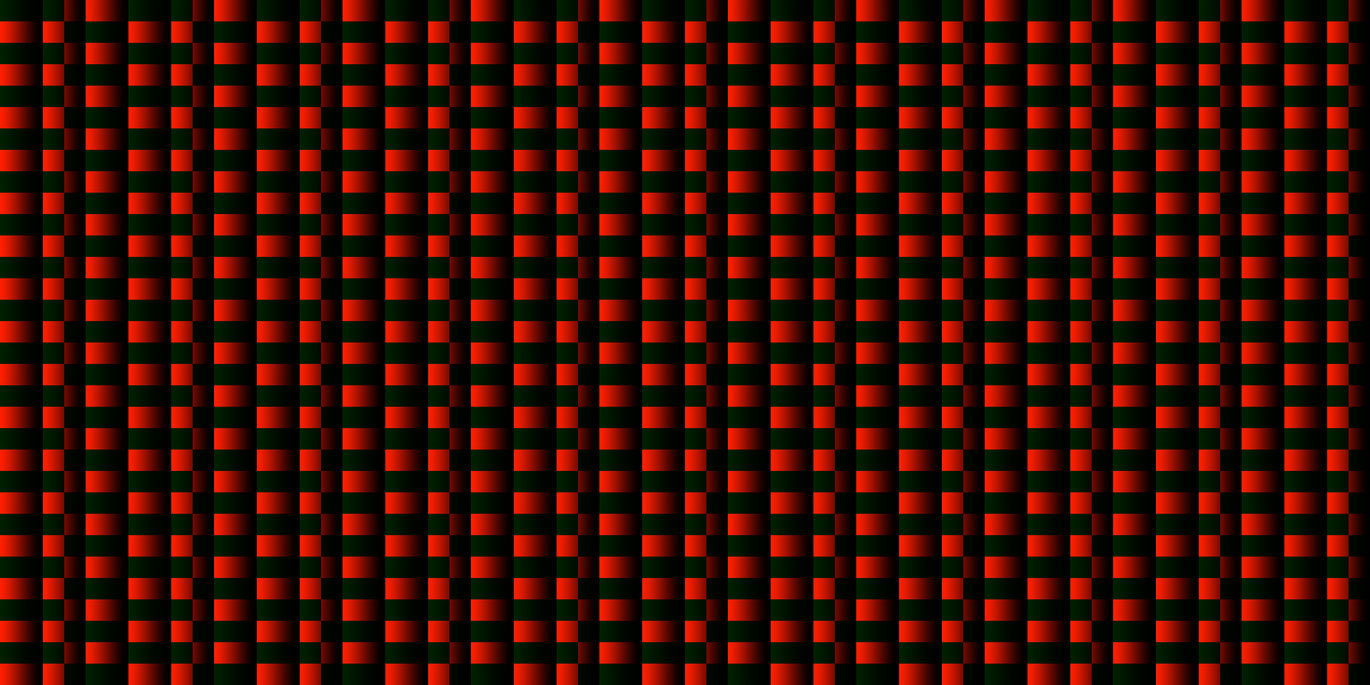A Flock of Rotations
Continuously falling pitches – descending into infinity. Jung An Tagen’s A Flock of Rotations perfectly encapsulates these figurations of descent into deep layers of matter. First, there appear checkerboard-like grid arrangements whose rapidly changing individual elements reveal ever new vistas of what supposedly lies beyond. Horizontal movements of the entire image matrix, interspersed with vehement crisscrossing and transverse progressions or increasingly fine-grained signal resolutions, play out on a vector space that seems to penetrate into ever-finer particle spheres, but ultimately always ends up back at itself. At the same time, the insistent soundtrack follows the principle of the so-called Shepard tone, where one thinks one perceives a constantly falling (or rising) frequency, but which in reality is a pitch that remains unchanged – the result of the skillful blending of several sine waves, each one octave apart.
The crafty interconnection of the two sound and image registers makes you believe that you’ve been caught in an endless downward spiral, while in reality you are going around in circles. These recursive loops, which can only be discerned indirectly or retrospectively, are broken up by harsh, monochrome flickering sequences, to which the acoustics adopt an appropriately matching staccato. But the stuttering itself is merely a transitional phase, not an analytical counterpoint, and so the regressive storm picks up speed again, causing red-white-and-black grid structures to plunge into virtual abysses, vector columns to run into nothingness, and staircase patterns to collapse in on themselves. Towards the end, it becomes increasingly clear that there is no boundary here, no outside, no escape. You’re pleasantly trapped in endless, swarm-like nesting, so you’d better get used to it. (Christian Höller)
Translation: John Wojtowicz
A Flock of Rotations
2026
Austria
11 min



